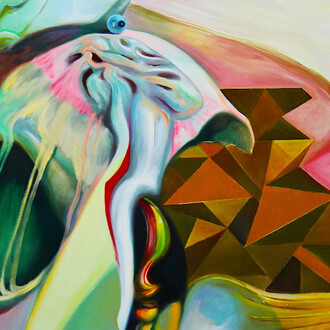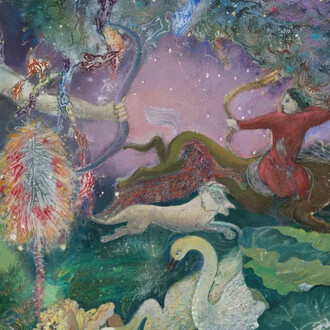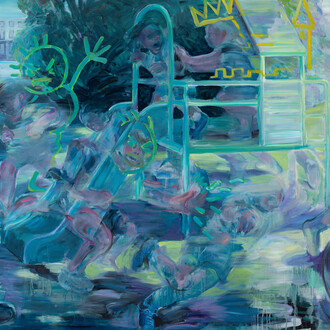The devil is made of fire and people are made of mud. Ceramics are a mixture of the two.
(Sharif Farrag)
Sharif Farrag makes this analogy explaining how the teachings from the Islamic school he attended on Saturdays as a child in LA’s San Fernando Valley have inspired his approach to ceramic sculpture.
Farrag describes his experience as a “fourth dimension kid” the
child of a Syrian mother and an Egyptian father, absorbing both
their Arab heritage and the pop culture that surrounded him.
The title of the exhibition, Hybrid moments, references both the
title of a song by one of his favorite bands, The Misfits, and the
hybridity that characterizes both his work and his personality.
He also cites the influence of Homi K. Bhabha’s writings about
hybrid identity.
Sharif Farrag’s work has been described as “nothing you have ever seen before.” His approach to ceramics is reminiscent of the freestyling in music like jazz and hip hop, an improvisational style that encompasses multiple references. His works is a diverse assemblage of historic and pop culture influences: patterns reminiscent of Islamic abstraction are juxtaposed with cartoon-like faces that peer out of crevices. Miniature cars and freeways wind around craggy mountains. There are ancient Egyptian gods, clocks, and regular appearances of the Pink Panther. Farrag breaks the symmetry generally associated with ceramic sculpture. His works are like exotic plants sprouting out of control. Art Nouveau, one of his influences, is crossed with the customization culture of the San Fernando Valley.
Farrag’s work draws the eye from all angles. Its complex composition needs to be seen from above and all the way around. Each work encompasses an immense tapestry of artistic decisions. Farrag’s work continues to reveal itself. There are hidden passages that emerge only after repeated viewings. The work is also infused with humor. Its craft and its fascinating assemblage of imagery inspires awe but is also designed to induce laughter. Farrag has a maximalist approach to his creations. He thinks of his compositions as “organized chaos.”
The connection of ceramics to the civilizations of North Africa, Asia and the Middle East is another factor that has drawn Farrag to the medium. He views his engagement with ceramics as a counterpoint to the European painting tradition. The work reflects his effort as a child of immigrants from the Arab diaspora to make art that fuses his family traditions with the vocabulary of European and American art. To quote Bhabha, it is “an art of the interstices.”
The exhibition will be accompanied by the publication of Sharif Farrag’s Glossary, a compendium of the words and themes, with definitions, that inform his work. It is a remarkable document, showing the profound insights and experiences that he channels into his work. An example is his definition of beauty: “Beauty is directly at the intersection of the objective and the subjective.”
Sharif Farrag was born in Reseda, California in 1993. He received his BFA from The University of Southern California in 2018 and his MFA from UCLA in 2023. His work in Clay Pop at Jeffrey Deitch in 2021 was acquired by the Hammer Museum. A group of his works was presented at the Rubell Museum, Miami last year. This is the artist’s first solo exhibition in New York. Farrag was awarded a Joan Mitchell Fellowship in 2024 and United States Artists Fellowship in 2022.
















